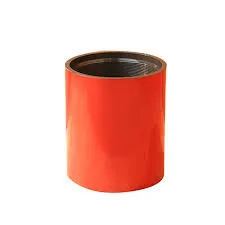- Afrikaans
- Albanian
- Amharic
- Arabic
- Armenian
- Azerbaijani
- Basque
- Belarusian
- Bengali
- Bosnian
- Bulgarian
- Catalan
- Cebuano
- Corsican
- Croatian
- Czech
- Danish
- Dutch
- English
- Esperanto
- Estonian
- Finnish
- French
- Frisian
- Galician
- Georgian
- German
- Greek
- Gujarati
- Haitian Creole
- hausa
- hawaiian
- Hebrew
- Hindi
- Miao
- Hungarian
- Icelandic
- igbo
- Indonesian
- irish
- Italian
- Japanese
- Javanese
- Kannada
- kazakh
- Khmer
- Rwandese
- Korean
- Kurdish
- Kyrgyz
- Lao
- Latin
- Latvian
- Lithuanian
- Luxembourgish
- Macedonian
- Malgashi
- Malay
- Malayalam
- Maltese
- Maori
- Marathi
- Mongolian
- Myanmar
- Nepali
- Norwegian
- Norwegian
- Occitan
- Pashto
- Persian
- Polish
- Portuguese
- Punjabi
- Romanian
- Russian
- Samoan
- Scottish Gaelic
- Serbian
- Sesotho
- Shona
- Sindhi
- Sinhala
- Slovak
- Slovenian
- Somali
- Spanish
- Sundanese
- Swahili
- Swedish
- Tagalog
- Tajik
- Tamil
- Tatar
- Telugu
- Thai
- Turkish
- Turkmen
- Ukrainian
- Urdu
- Uighur
- Uzbek
- Vietnamese
- Welsh
- Bantu
- Yiddish
- Yoruba
- Zulu
seamless pipe
Seamless Pipes The Backbone of Modern Industry
In the industrial landscape, the demand for high-quality materials is paramount, particularly in sectors such as oil and gas, construction, and manufacturing. Among the various options available, seamless pipes have emerged as a favored choice for many applications due to their unique properties and robust performance. This article delves into the significance, manufacturing process, advantages, and applications of seamless pipes, highlighting why they are considered the backbone of modern industry.
Understanding Seamless Pipes
Seamless pipes are tubular products that do not have any weld seams. These pipes are created from solid round steel billets, which are heated and then pierced to create a hollow tube. The manufacturing process involves several steps including piercing, elongation, and sizing. This results in pipes that have a uniform structure and no weak points caused by welding.
The Manufacturing Process
The production of seamless pipes begins with high-quality raw materials, typically carbon steel, alloy steel, or stainless steel. The chosen metal is heated to a high temperature until it becomes malleable. The heated billet is then pierced with a mandrel to create a hollow pipe, and subsequently elongated into the desired length. The pipe is then further processed through a series of rolling and sizing operations, ensuring it meets specific dimensional and mechanical properties.
Quality control is crucial during the manufacturing process. Each batch of seamless pipes undergoes rigorous testing, including hydrostatic tests, ultrasonic tests, and dimensional checks. This ensures that the pipes not only conform to industry standards but also guarantee safety and reliability.
Advantages of Seamless Pipes
1. Strength and Durability Seamless pipes possess a higher strength-to-weight ratio compared to welded pipes. Their absence of seams minimizes the likelihood of structural failure, making them suitable for high-pressure applications.
seamless pipe

2. Corrosion Resistance Many seamless pipes are manufactured from corrosion-resistant materials, particularly stainless steels. This makes them ideal for transporting corrosive substances, ensuring a longer service life.
3. Versatility Seamless pipes can be produced in a wide range of sizes, making them adaptable for various applications, including oil drilling, gas transport, and construction projects.
4. Better Flow Characteristics The absence of seams in seamless pipes means there are no internal welds that might impede the flow of fluids. This results in better flow characteristics, reduced turbulence, and higher efficiency in fluid transport.
5. Cost-Effectiveness While seamless pipes might have a higher upfront cost compared to welded pipes, their durability and reliability often lead to lower maintenance costs and longer service intervals, making them a cost-effective solution in the long run.
Applications of Seamless Pipes
The applications of seamless pipes are diverse and widespread. In the oil and gas industry, they are essential for drilling operations, pipelines, and as components in various machinery. The construction sector utilizes seamless pipes for structural applications, scaffolding systems, and as support elements in high-rise buildings. Furthermore, seamless pipes are used in boilers, heat exchangers, and automotive industries for manufacturing exhaust systems and hydraulic cylinders.
Conclusion
Seamless pipes play a critical role in modern industry, offering unrivaled strength, durability, and versatility. As various sectors continue to evolve and demand higher quality materials, seamless pipes stand out as a reliable solution capable of meeting stringent requirements. Their importance cannot be overstated, as they facilitate the smooth operation of essential services and infrastructure globally. In an era where efficiency and safety are paramount, seamless pipes remain a fundamental building block, contributing to innovation and progress in a multitude of industries.
-
Tubing Pup Joints: Essential Components for Oil and Gas OperationsNewsJul.10,2025
-
Pup Joints: Essential Components for Reliable Drilling OperationsNewsJul.10,2025
-
Pipe Couplings: Connecting Your World EfficientlyNewsJul.10,2025
-
Mastering Oilfield Operations with Quality Tubing and CasingNewsJul.10,2025
-
High-Quality Casing Couplings for Every NeedNewsJul.10,2025
-
Boost Your Drilling Efficiency with Premium Crossover Tools & Seating NipplesNewsJul.10,2025







